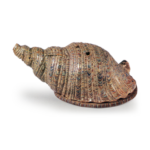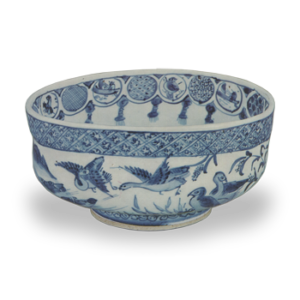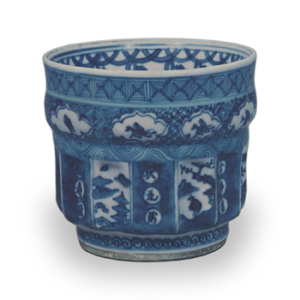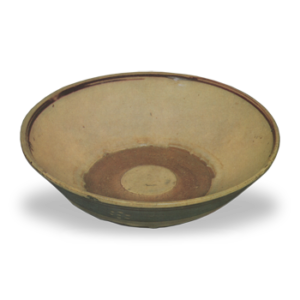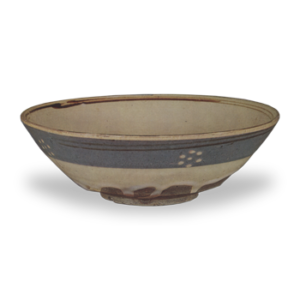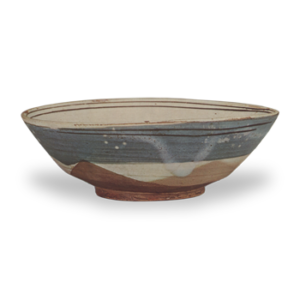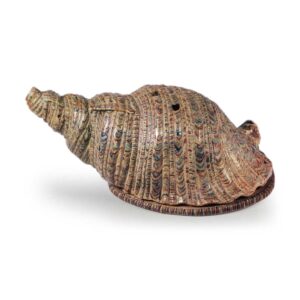
Incense burner with spiral shell in overglaze enamels
Important Cultural Property
Height 13.5cm, Length 30.7cm
Seikado Bunko
This is the second largest piece of carving style incense burner after the “Iroe Pheasant Incense Burner. The large conch shell is designed as it is. Until the Momoyama period (1573-1600), conch shells were used by warlords to inspire them in battle, but in the peaceful era, they became incense burners to decorate the tokonoma (alcove).
This incense burner has a flat base with an oval-shaped ash container attached to the body, covered with a large conch shell with three holes on the back for venting smoke. The entire surface of the shell is glazed, and the back is glazed at the smoke outlet. The base is glazed around the rim, while the bottom and the rest of the body show a white base. The entire piece is realistically depicted as a shell with many convex lines, and the overglaze painting is finely decorated with red, blue, green, purple, yellow, and gold, using most of the overglaze paints used by Insei.
The shell seems to have been made by joining three sections together, and there are two cracks in the kiln at the joints, and the flat bottom is marked with a gourd-shaped Insei small seal. There is one other similarly made incense burner with a conch shell, which, like the “Iroe pheasant incense burner,” is thought to have been made at the same time.

